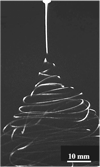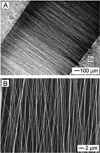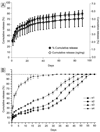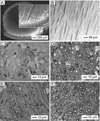Putting Electrospun Nanofibers to Work for Biomedical Research
- PMID: 20011452
- PMCID: PMC2791376
- DOI: 10.1002/marc.200800381
Putting Electrospun Nanofibers to Work for Biomedical Research
Abstract
Electrospinning has been exploited for almost one century to process polymers and related materials into nanofibers with controllable compositions, diameters, porosities, and porous structures for a variety of applications. Owing to its high porosity and large surface area, a non-woven mat of electrospun nanofibers can serve as an ideal scaffold to mimic the extracellular matrix for cell attachment and nutrient transportation. The nanofiber itself can also be functionalized through encapsulation or attachment of bioactive species such as extracellular matrix proteins, enzymes, and growth factors. In addition, the nanofibers can be further assembled into a variety of arrays or architectures by manipulating their alignment, stacking, or folding. All these attributes make electrospinning a powerful tool for generating nanostructured materials for a range of biomedical applications that include controlled release, drug delivery, and tissue engineering.
Figures












References
Grants and funding
LinkOut - more resources
Full Text Sources
Other Literature Sources

